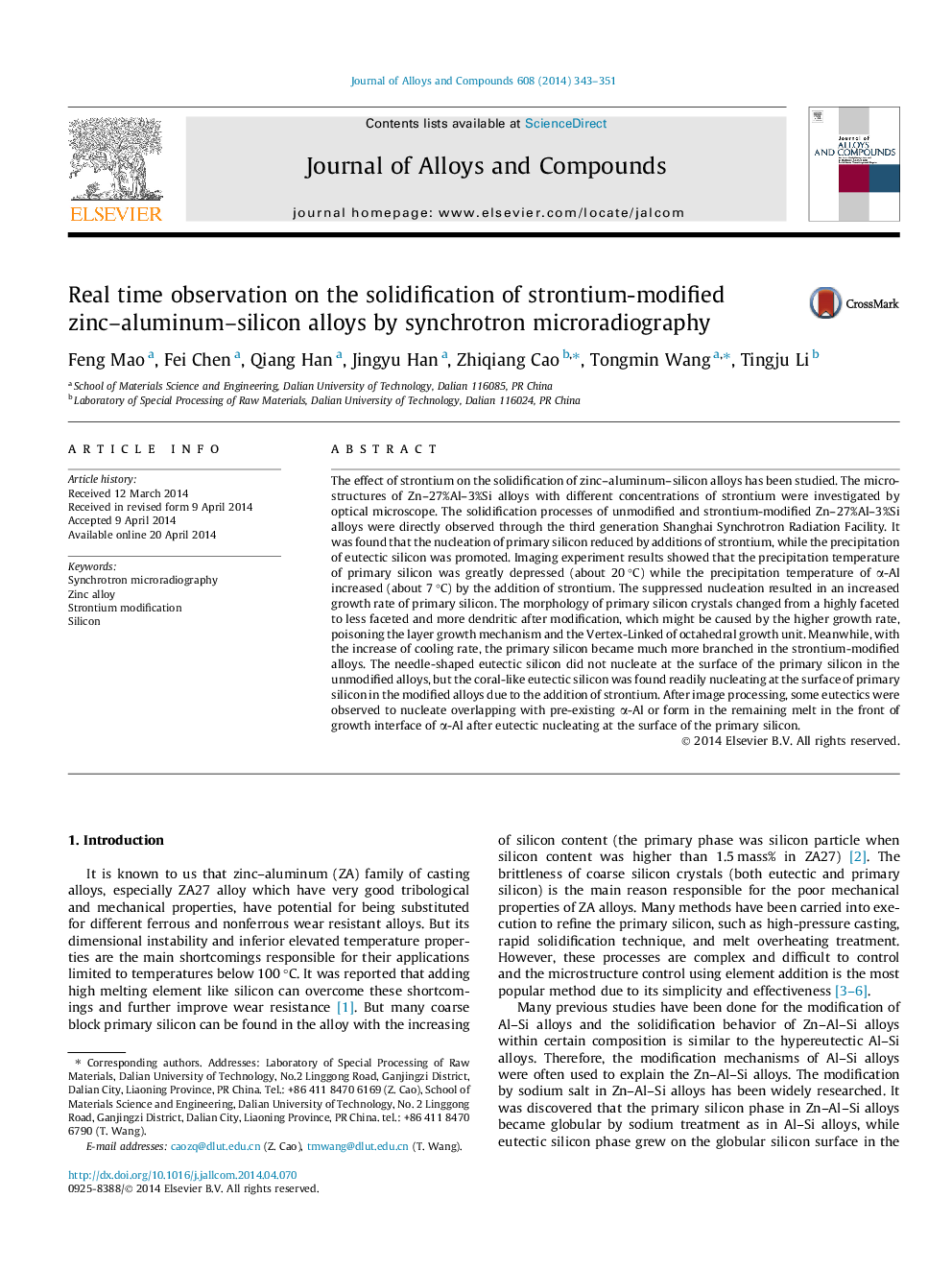| Article ID | Journal | Published Year | Pages | File Type |
|---|---|---|---|---|
| 1610860 | Journal of Alloys and Compounds | 2014 | 9 Pages |
Abstract
The effect of strontium on the solidification of zinc-aluminum-silicon alloys has been studied. The microstructures of Zn-27%Al-3%Si alloys with different concentrations of strontium were investigated by optical microscope. The solidification processes of unmodified and strontium-modified Zn-27%Al-3%Si alloys were directly observed through the third generation Shanghai Synchrotron Radiation Facility. It was found that the nucleation of primary silicon reduced by additions of strontium, while the precipitation of eutectic silicon was promoted. Imaging experiment results showed that the precipitation temperature of primary silicon was greatly depressed (about 20 °C) while the precipitation temperature of α-Al increased (about 7 °C) by the addition of strontium. The suppressed nucleation resulted in an increased growth rate of primary silicon. The morphology of primary silicon crystals changed from a highly faceted to less faceted and more dendritic after modification, which might be caused by the higher growth rate, poisoning the layer growth mechanism and the Vertex-Linked of octahedral growth unit. Meanwhile, with the increase of cooling rate, the primary silicon became much more branched in the strontium-modified alloys. The needle-shaped eutectic silicon did not nucleate at the surface of the primary silicon in the unmodified alloys, but the coral-like eutectic silicon was found readily nucleating at the surface of primary silicon in the modified alloys due to the addition of strontium. After image processing, some eutectics were observed to nucleate overlapping with pre-existing α-Al or form in the remaining melt in the front of growth interface of α-Al after eutectic nucleating at the surface of the primary silicon.
Related Topics
Physical Sciences and Engineering
Materials Science
Metals and Alloys
Authors
Feng Mao, Fei Chen, Qiang Han, Jingyu Han, Zhiqiang Cao, Tongmin Wang, Tingju Li,
